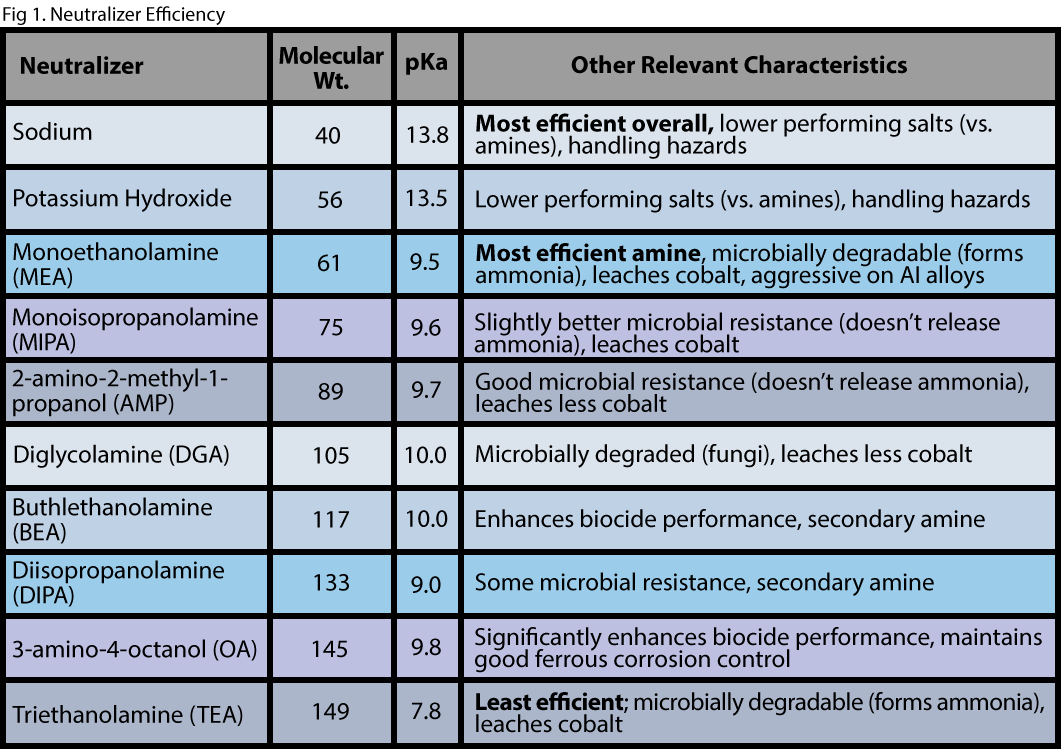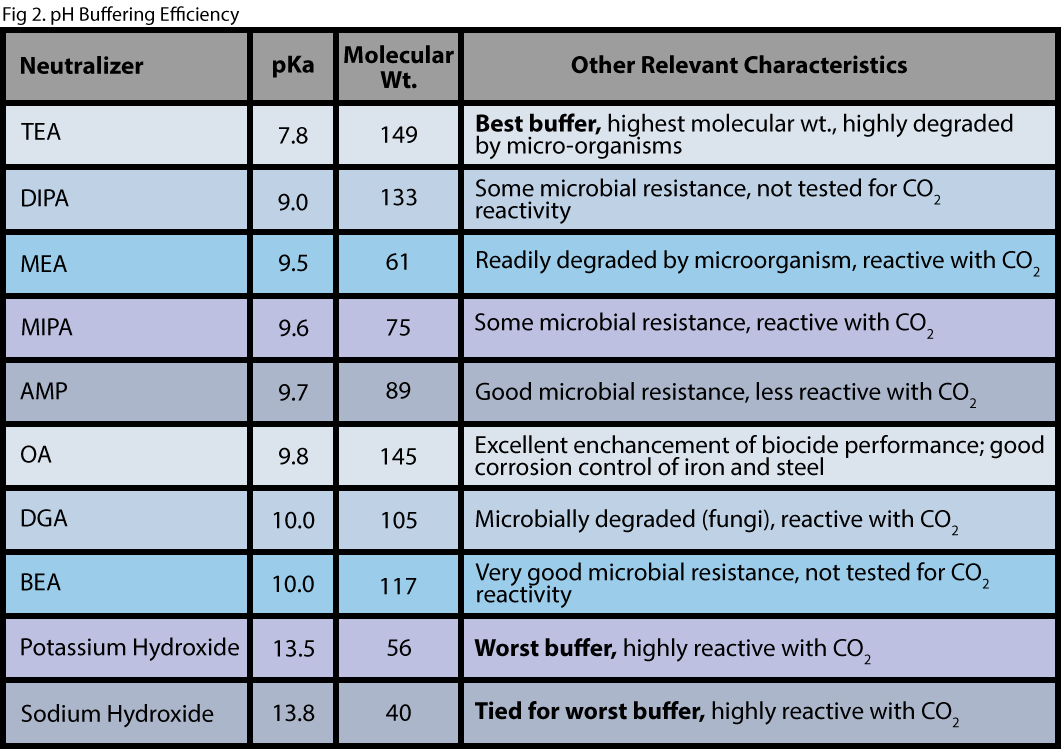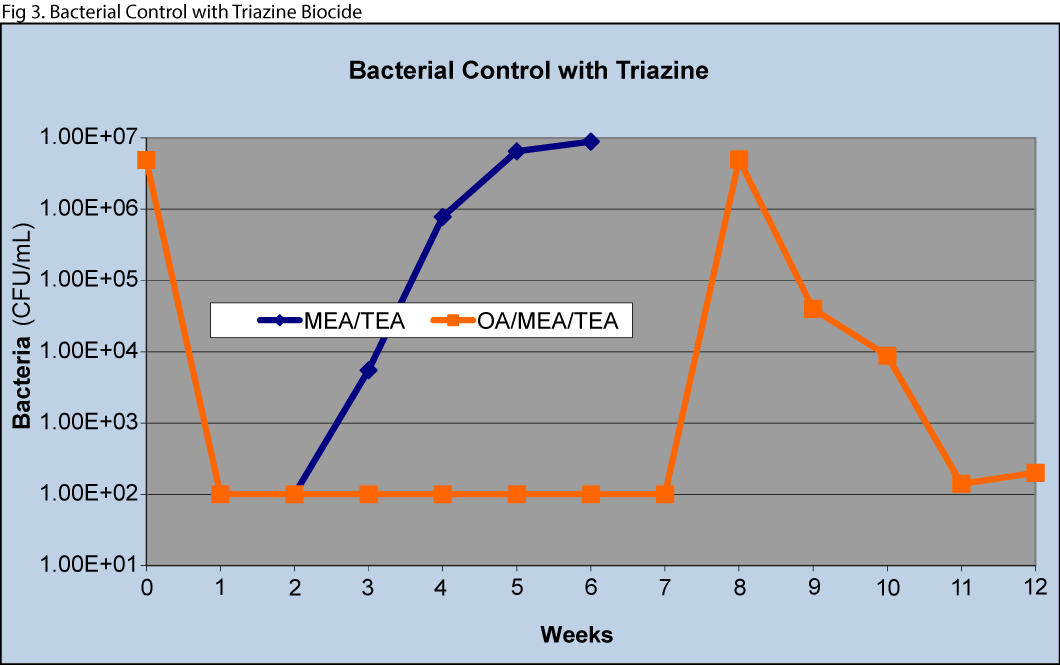Amines 101 for Metalworking Fluids
By Pat Brutto, The Dow Chemical Company
Amines and amino alcohols are widely used in water-dilutable metalworking fluid (MWF) concentrates, to neutralize acid-functional components and develop and maintain alkaline pH once diluted by the end user. These components are also sometimes added “tankside” to adjust and buffer the pH of in-use fluids. Commonly used amines, such as monoethanolamine (MEA), triethanolamine (TEA), monoisopropanolamine (MIPA) and 2-amino-2-methyl-1-propanol (AMP) have different advantages in terms of neutralization and buffering efficiencies. This is illustrated in Figs. 1 & 2, where comparisons are made among amines and inexpensive caustics. Although caustics are cheap, efficient neutralizers, they have significant performance disadvantages relative to amines. Caustics are poor pH buffers, reacting rapidly with atmospheric carbon dioxide.


Because of differences in amine cost, neutralization and buffering efficiencies, MWFs are often formulated with multiple products. For example, MEA and TEA have been used together for many years to provide a balance of cost effective neutralization, pH development and buffering. Inspection of Figs. 1 & 2 makes it clear why these amines have historically been popular.
In addition to the basic functions described above, amines often impact other fluid characteristics such as corrosion control, foam development, cobalt leaching and microbiological resistance. In fact, for today’s higher performing, longer life fluids these secondary characteristics are often more important than the primary ones. For example, amine choice can significantly influence the resistance of a fluid to microbes, which in turn impacts fluid longevity. This is demonstrated in Fig. 3 for a synthetic MWF containing 1000 ppm (at dilution) of the registered biocide hexahydro-1,3,5 tris(2-hydroxyethyl)-s-triazine. The fluid containing MEA/TEA fails bacterial control (2 consecutive weeks above 105 CFU/mL) after 4 weeks, while partial replacement with OA increases bacterial resistance to 12+ weeks. OA is believed to increase permeability of the bacterial cell wall, enabling the biocide work more efficiently.

Last, but not least, it is important to consider regulatory factors and customer requirements which may limit the types of amines used. For example, German regulation TRGS 611 prohibits secondary amines from intentionally being adding to MWFs used in its jurisdiction; this regulation also limits secondary amine impurities to maximum 0.2% in MWF concentrates. The only exception is where a given secondary amine has been specifically exempted by the regulatory authorities. Some multi-national users of MWFs have also requested that current or future generations of products not be formulated with secondary amines.
